Cat Collar Training & How To Nail It In Just 3 Steps
With a cat collar, you can ID, track, and keep your feline friend safe. But before we begin - here's how to get your cat to wear it in the first place.
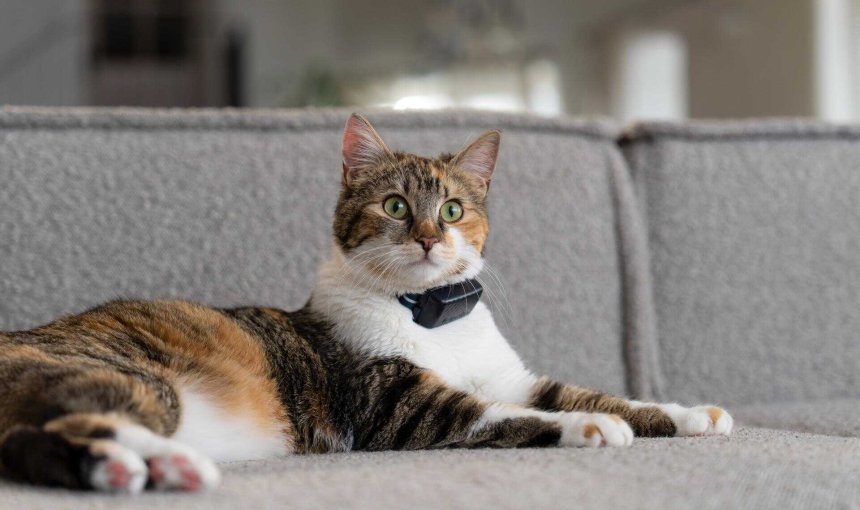
In a world where only around 2% of missing cats are reunited with their parents, attaching an ID tag or using a smart cat collar can help keep them safe. So here’s how to get started with cat collar training – and how to train your cat to wear a collar in just 3 steps.
Key Takeaways
Yes, cats CAN adjust to collars.
With time and patience, cats can learn to wear collars and harnesses. They’re an important safety measure because with an ID tag, your cat is less likely to be mistaken as a stray.
Choose a safety collar and train gradually.
A breakaway or safety collar can help prevent a cat from getting trapped. Introduce the collar gradually, use a ton of pets and praise when your cat approaches it, and make sure it’s a comfortable fit.
Avoid using training collars that use aversive techniques.
A training collar that uses shocks to train your cat won’t solve any underlying behaviors, but rather make your cat timid, fearful, or even aggressive instead.
Use a smart cat collar as an emergency measure.
Tractive devices come with a weight-adjustable Rogz safety collar and real-time GPS tracking to help you locate your cat right away.

Find out where your cat spends their time.
Read more- Key Takeaways
- Should cats wear collars?
- Do indoor cats need collars?
- When should my cat start wearing a collar?
- How to train a cat to wear a collar
- How long does it take for a cat to get used to a collar?
- Do training collars work on cats?
- Should my cat wear a harness?
- Where a smart cat collar beats the rest
Should cats wear collars?
In a nutshell: yes. With proper cat collar training, fit and selection, and the right amount of care, most cats adjust pretty well to collars. In fact, one study from the Ohio State University found after researching 538 cats and their collars that most cats (72.3%) wore their collars successfully.1 Cat owners also expected their cat’s tolerance to wearing a collar to be lower than it actually was. In other words – cats are better at wearing collars than we give them credit for.
The study also found that only 7.1% of cats lost their collars – so it’s wise to invest in a microchip as well for max security. Even vets recommend that all cats wear collars, since they can help identify your cat if they get lost.
⚠️ Less than 2 percent of lost cats are returned to their owners.2 Getting a cat to wear a collar with ID tags and a cat GPS tracker however, can change that.
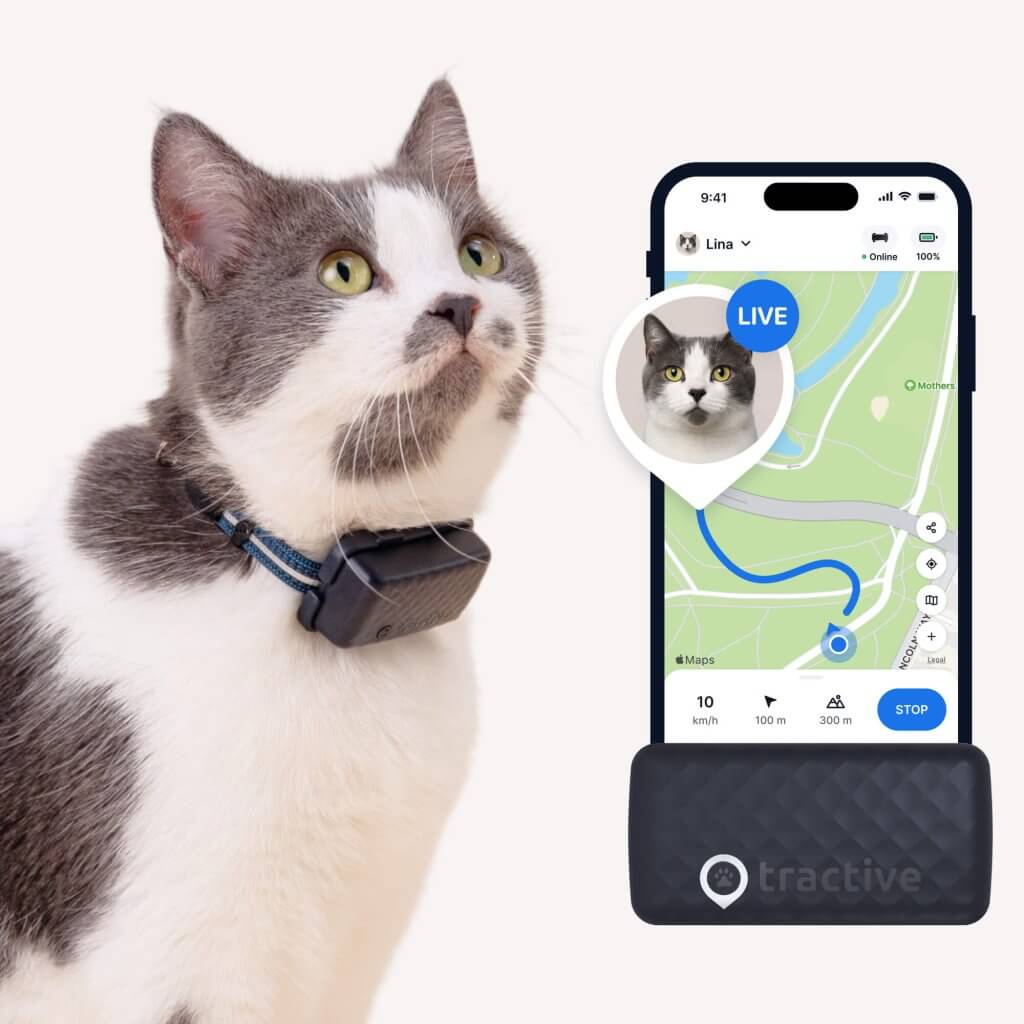
Track your cat wherever they go
Get real-time location information, wherever they go. Find out when they go somewhere they shouldn’t, with Virtual Fences. And discover their favorite spots with Territory.
Do indoor cats need collars?
Yes! Even indoor cats can benefit from getting used to wearing a collar. If your cat somehow slips out of the house, an ID tag on their collar can prove you’re actually their owner. Getting mistaken as a stray means your cat might be taken to a local shelter, where they’re at risk of being rehomed. (Or even euthanized.)
When should my cat start wearing a collar?
As soon as possible. It’s easier for a young cat to get used to wearing a collar than an adult or senior cat. However, even older cats can get used to wearing a collar. We also recommend you start cat collar training as soon as your cat has reached their full size, when they can safely wear a breakaway collar.
How to train a cat to wear a collar
Step 1: Choose the right (safety) collar
There is only one kind of collar appropriate for cats – a breakaway or safety collar. This is a special collar that comes off in case pulled on with force. For example, if your cat gets stuck on a tree branch. Or if their collar gets caught on something after your cat (somehow) finds their way under the hood of a car. With a breakaway collar, your cat will be able to get out of a sticky situation. Put short, a safety cat collar will stay on 99% of the time, but free your cat to avoid them getting hurt or trapped.
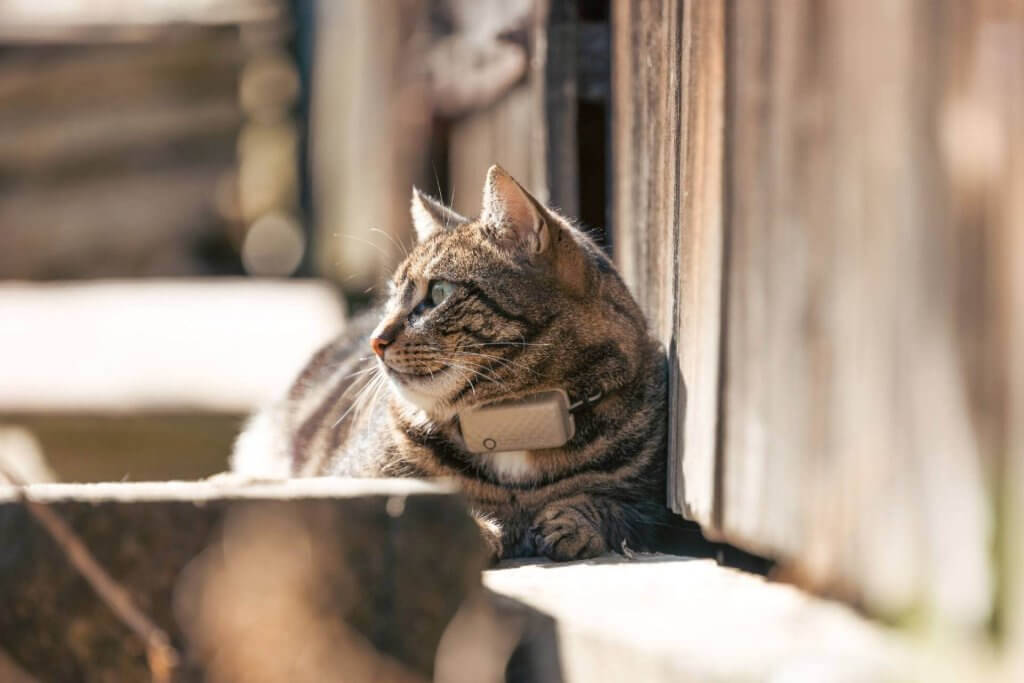
⚠️ Never use a collar without a safety release breakaway mechanism on a cat! You want to avoid your cat’s collar getting them stuck in a weird spot without breaking away. Besides that, consider the following factors when choosing the best cat collar for your cat:
- color
- material
- size
- glow in the dark / reflective qualities
- force required*
*When using a breakaway collar, always make sure your cat meets the minimum weight requirement. This will ensure that their body weight will provide enough force to release the collar if necessary. If your cat is too small or lightweight (for example, a newborn kitten), they may not be able to wear a collar safely.
Step 2: Introduce the collar
Choose a time when your cat is calm and happy to introduce the collar. Ideally, it’s also in a place where they’re comfortable. Set the collar on the floor by your cat and let them begin to sniff, play with and investigate it. You can also try rubbing the collar on their bed, or rubbing a cloth against your cat and then against the collar. This will pass their scent to the collar and may help your cat warm up to the collar more quickly. If your cat snuggles up to it, reward them with treats.
⚠️ Don’t rush to put the collar on them immediately! If you do so, your cat might get scared, try to shake it off, or avoid it altogether. Take plenty of small breaks, especially at the beginning, as they’re still getting used to it. It’s also a good idea to take it off when they’re eating, asleep, or sick.
Step 3: Let your cat get used to the collar
After you’ve let your cat get to know their new friend, it’s time to put the safety collar on your cat.
- Securely attach the collar around your cat’s neck.
- Make sure it’s properly fitted. Your collar should be snug enough to fit but loose enough that two fingers can fit between it and your cat’s neck.
- Let your cat get used to their collar for a few minutes before taking it off.
- Reinforce your cat’s behaviors throughout the process. Give kitty tons of praise, pets, and a few treats when they comply.
- Stay patient. Never yell at your cat for punish them for wriggling loose from their collar. It just means they haven’t learned to wear it yet. Plus, getting mad at them will just create more resistance as your cat develops a “bad” feeling around the collar.
- If your cat appears disoriented when you first attach the collar, know that that’s normal. Give them time to get used to it, and distract them with food or play, to help them forget they’re even wearing it.
- Practice your cat collar training daily, for increasing lengths of time, until your cat is comfortable wearing the collar.
- Attach an ID tag and GPS cat tracker to the collar and let them outside (if you choose).
Be sure to monitor the collar’s fit, and your cat’s behavior regularly. Watch out for any excess scratching, pulling or discomfort, which may indicate you need to change the collar. If your cat has any physical issues (such as an allergic reaction) to wearing a collar, talk to your vet.
How long does it take for a cat to get used to a collar?
Unfortunately, there’s no clear answer – it really depends. Just as with people, the time it takes for a cat to get used to a collar varies widely depending on their personality, age, and past experiences. While some cats might adapt within a few days, it can take several weeks for others.
Initially, expect some annoyance, resistance, or even fear. Your cat might bat at the collar, shake their head, or even try and remove it. The best way to help them adjust is to never rush them into things. Take off the collar right away if your cat protests and try again some time after.
Stay patient and remember: your cat’s comfort and safety should always come first.
Do training collars work on cats?
No, we’d strongly recommend against using any product marketed as a “training collar” or “e-collar” for cats. Both vets and animal rights organizations discourage using these, especially collars that deliver electric shocks to “train” animals against any behavior. The principle behind these devices is aversive training – essentially, creating a negative association to discourage a behavior. However, this method is fundamentally at odds with how cats learn and does more harm than good.
A cat that receives a shock when it jumps on a counter, for example, will not understand that the counter is the problem. Instead, it will likely associate the pain with something else in the environment – like a family member, another pet, or a specific location in the house. This can lead to fear, anxiety, and aggression, causing a breakdown in the trust between you and your cat. Instead of solving the original issue, they’ll be more likely to grow timid, withdrawn, and fearful of their surroundings, pee everywhere around the house out of stress, or even redirect their aggression towards people or other animals.
Finally, poorly fitted training collars can potentially cause painful skin burns or pressure necrosis. The stress from repeated shocks can also negatively impact a cat’s cardiovascular health. That’s why you’re always better off training your cat through positive reinforcement instead. Keep some treats at hand and reward them with cuddles or playtime when they do behave. Else, a certified behavioral specialist can help you in more serious cases.
Should my cat wear a harness?
In general, it’s best to use a harness only when you walk your cat on a leash. When they’re roaming free, it’s best to use a safety collar. Harnesses could pose a threat to outdoor cats exploring their territory. Essentially, your cat might have difficulty freeing themselves from the harness if it is caught on something. At the same time, a resourceful cat can even slip out of a harness if particularly motivated.
However in many cases, cats can adjust to a harness with some training and patience.
Read more: How To Harness Train A Cat In 7 Easy Steps
Where a smart cat collar beats the rest
While traditional collars are great for holding ID tags and bells, a smart collar takes things to the next level, especially when it comes to safety. With its built-in GPS tracker, your trusty Tractive device helps you keep tabs on where your cat’s off wandering – with just a glance at your phone.
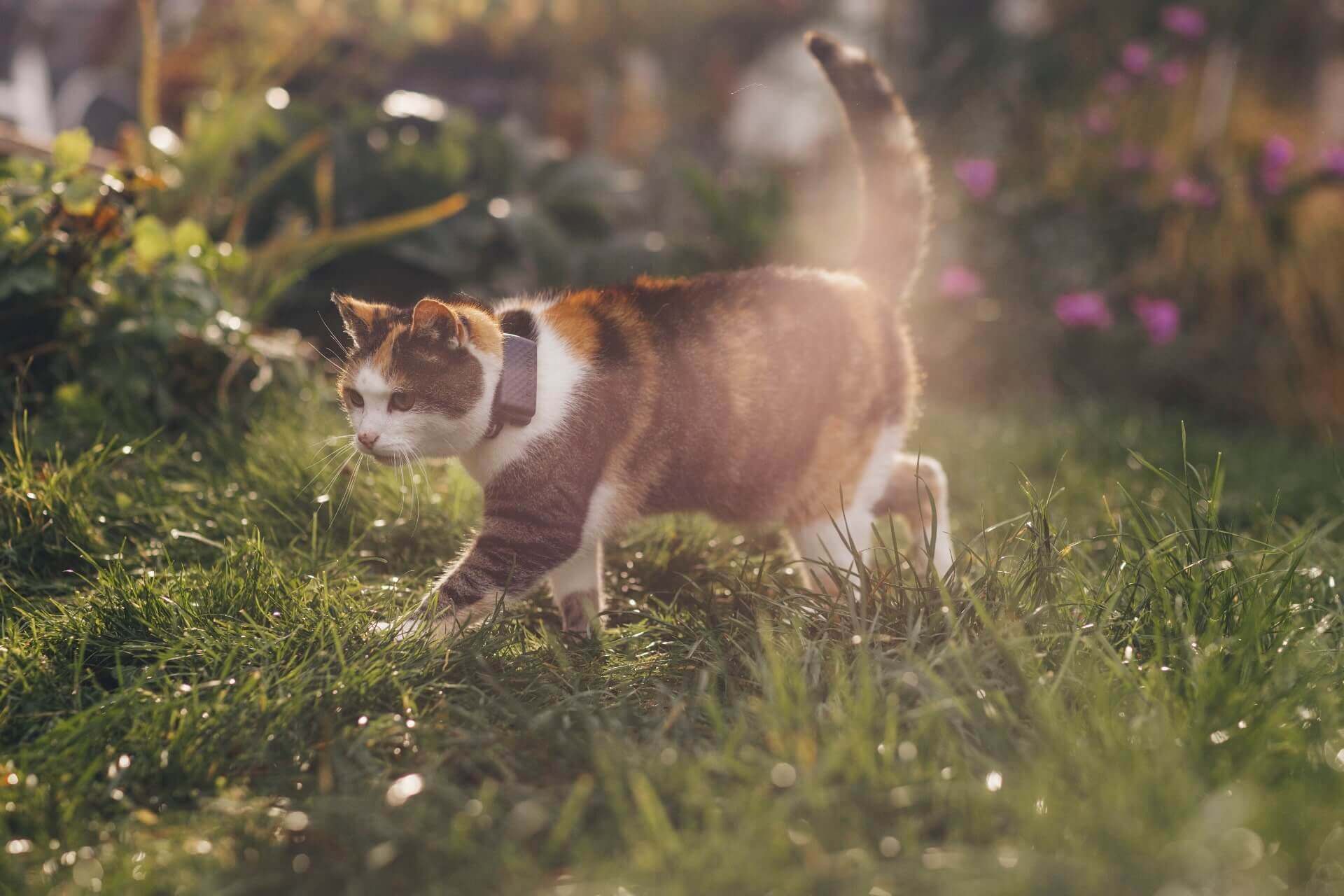
Strapped to your cat’s collar, you can now:
- Track your cat’s movements in real-time
With LIVE mode via your Tractive mobile app. Here, you can follow your cat’s every step on a map, with their real-time location updated every couple of seconds. - Find your cat no matter how far they wander
Unlike an AirTag, you won’t need a network of compatible devices for your Tractive device to work. Plus, it also works over an unlimited range. - Prevent your cat from escaping home
By setting up a “safe zone” around your backyard. Now if your cat ventures out of it (or into a “no go zone”) you’ll get an escape alert to your phone.
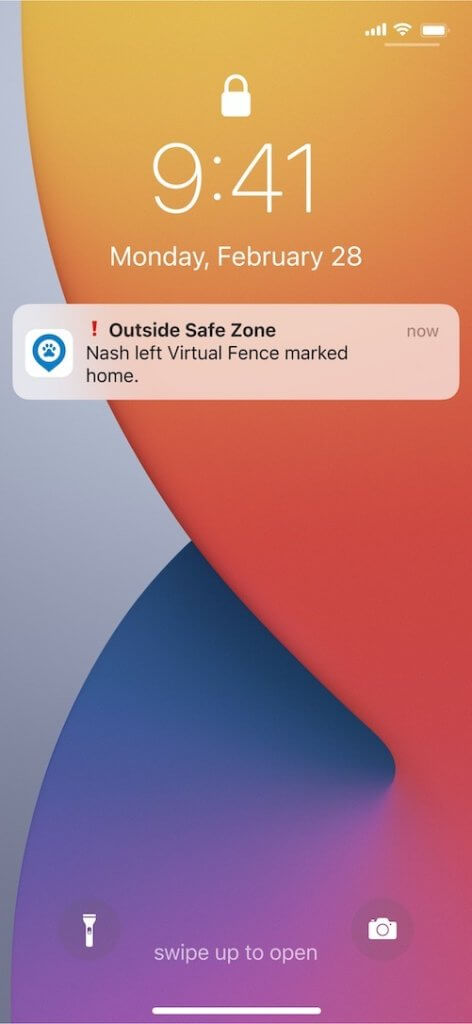

And if you’ve found this post helpful, share it with a friend or a loved one – and let’s help build a safer, kinder world for our furry friends together.

This post was written by Tina W. – mom of two rescued cats and a Maine Coon. Her love for cats led her to Tractive, where she puts her passion for our purring four-legged friends into practice on the regular.
Besides keeping the Tractive office running like clockwork as Office Manager, she enjoys sharing her expertise (and cat photos!) on the Tractive blog.



